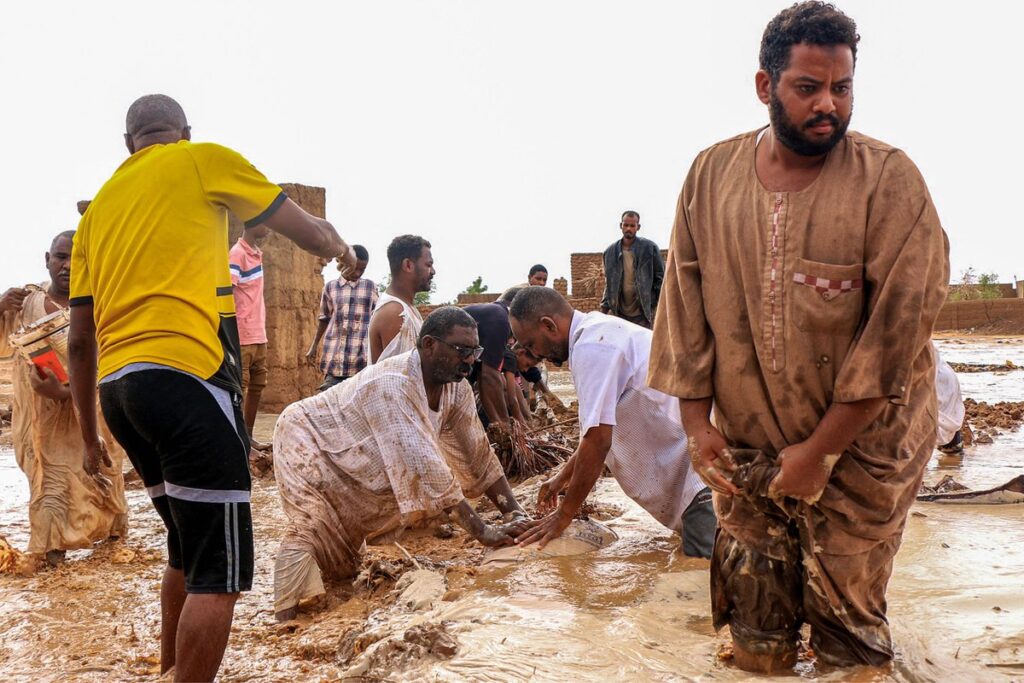Food & Climate
The silt accumulation in Sudan Arbaat Dam converted to a disaster caused killing tens of people, destroyed thousands of agricultural acres of lands, and now threatens the main source of drinking water.
At least 60 people have been killed after a dam burst because of heavy rainfall in war-torn Sudan.
Sudan Arbaat Dam acted as the primary freshwater supply for Port Sudan, which became the acting capital of Sudan following the beginning of fighting in Khartoum between government forces and the Rapid Support Forces during the ongoing Sudanese civil war, which has started two years ago, according a report seen by “Food & Climate” platform.
And it was part of Sudan’s floodwater management infrastructure, but the last Maintenance works on the dam were held in 2017.
What is Dam?
Sudan Arbaat Dam was established in 2003. The reservoir area is (4750) km2 and includes the Adros Khor reservoir, which is 160 km long.
The length of the Arbaat Delta is 25 km, while the arable area of the Arbaat Delta is about 23,215 acres, of which about 9,285 acres can be cultivated by spate irrigation. The cultivated area is about 2,400 acres, and another 8000 acres can be added to spate irrigation if water is available, according to “dabangaSudan”.
Sudan Arbaat Dam has faced number of challenges since before the civilian war despite the great its importance.
First, Sediment accumulation was considered one of the most prominent problems facing the dam, as sediment accumulation reduces the storage capacity and negatively affects the dam’s effectiveness in collecting and storing water.
Second, Lack of maintenance: There was an urgent need for continuous maintenance to ensure the efficient operation of the dam, but sometimes local authorities might face financial or logistical difficulties that affect the implementation of the necessary maintenance work.
Third, Climate change played a role in changing the rainfall pattern, which may result in a shortage in the amount of water stored in dams in some years.
World Bank warning
The World Bank warned from the silt accumulation in Sudan Rabaat Dam and some other problems in 2018.
The bank report “Management of critical water supply sources near Port Sudan, Sudan: Arbaat Dam and well fields at Arbaat and moj” said: “The reservoir dam along the Khor Arbaat is under threat of siltation and reduced flow, and wells near Arbaat are failing”.
So, The World Bank authorized Hydro Nova, SRL, by contract dated March 30, 2018, to proceed with the preparation of a Water Resources Management Study for Arbaat and Arbaat Well Fields and Arbaat Dam in Port Sudan, Sudan, but despite of the study finding catastrophic results, the authorities did not fix any of them.
The key results of the study are describing the most beneficial options to augment water delivery at Port Sudan. Of the many alternatives considered, the one that could yield the highest benefit to the RSWC involves the construction of an underground dam and infiltration gallery near the lower part of Arbaat Well Field and the construction of a new water intake at the existing dam and partial dredging of the reservoir.
Now, humanitarian partners and authorities are working on deploying more teams to assess the damage and address the urgent needs of an estimated 50,000 people affected by the catastrophic failure of the Arbaat Dam, 38 kilometres northwest of Port Sudan, on Saturday. 30 fatalities have been confirmed by the local authorities thus far, however, the number of casualties could be much higher, with some figures suggesting 130.
In a ‘flash update’ situation report issued on Monday night, the UN Office for the Coordination of Humanitarian Affairs (OCHA), sats that the Sudanese authorities have deployed a team to conduct search and rescue.

The collapse of the dam in Red Sea state is one of the worst incidents, washing away farms and villages downstream, according to “BBC”.
Local resident Ali Issa told the AFP news agency that people had been “stuck in seven cars – they tried to get them out but couldn’t”.
Another, Moussa Mohamad Moussa, said he had been told that in one area “all the houses and everything was swept away”.

